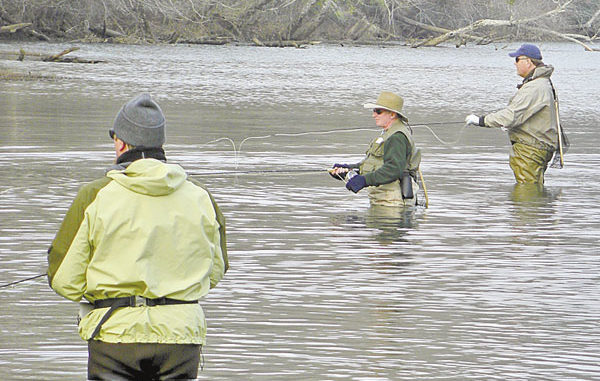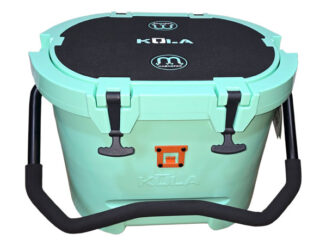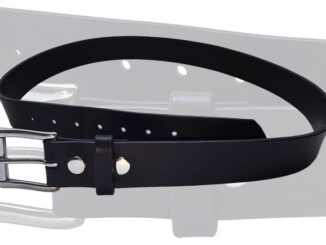
For the second December in a row, sneaux blanketed the homestead. It brought back memories of an “ice box” trip last winter to the Little Missouri River in Arkansas.
While flurries were pouring down from the sky onto the silent water, my friend George struggled mightly to get his casts out more than a few feet.
“Ice on the guides, George. Check it out,” I said as I pointed to the first stripping guide.
Whenever the temperature dips below 32 degrees, water droplets on fly line will shed on the guides as the line is stripped in, and immediately begin to freeze. At some point, the line gets trapped at each guide, making it impossible to shoot line.
“What do I do?” asked George.
“Lower the rod in the water and shake it. The water’s warmer and will melt the ice. You’ll get about three casts before it locks up again.”
Now you’re probably wondering why anyone in their right mind would travel several hours to spend a weekend wading in icy-cold water in the middle of winter to catch rainbow trout, most not even a foot long.
Who said I was in my right mind?
We flyrodders suffer a mental affliction known as “gottago wheretheybite.” Although the nearby lake may be stuffed with bream and crappie, if they’re not biting, we’re not interested. We’re willing to drive for hours, and suffer through wicked cold once there, to get in on good action.
Here in Louisiana, winter offers a few options for good flyrod action. If we get a weekend in January and February where the wind is down, and there’s a break in the torrential rains, then our travel destination is the marsh. The water is often low and clear. This can be a great time for sightcasting to cruising reds.
Unfortunately, such weekends are as rare as a teenager without a cell phone. For that reason, the second travel option is to go north to the trout streams in Southwest Arkansas and Southeast Oklahoma.
Trout don’t care about wind, rain or cold. It’s all about the presentation.
Now here’s the irony: It was on one of these trout trips to the Little Mo years back that I learned a technique that greatly improved my luck with winter bream and crappie.
At the Old Factory access, I met up with a couple members of the North Louisiana Fly Fishers club, who had made the 2 1/2-hour trip from Shreveport as part of a group that called themselves “The Frozen Chozen.”
While lining up my rod, I sat and watched them fish for awhile. These guys were using wooly buggers and casting into a deep pool. The typical approach with buggers is to cast out, let the leader sink, then strip the fly in.
But they were doing something entirely different. They had the bugger sitting 3 feet under a strike indicator. They’d cast into the pool, let it sit for a few seconds, then twitch the float a couple inches, let it sit a few seconds, twitch again and so on.
At times, the float would just be sitting on top, and then in an instant, it would plunge under — at which point, the caster lifted his rod and the fight was on. The next scene was an airborne trout, leaping several feet above the water.
My analysis of this was that suspending flies under strike indicators allowed the fly to remain close to structure or a holding area (known as a “prime lie”) for a longer time. And that increased the chances of a bite.
Twitching the float also imparts a vertical motion on the fly. Fish have issues with prey that go up and down. It just ticks them off, and the more they want to eat it.
Try fishing for bream and sac-a-lait using this method. Place a tiny strike indicator about 2 to 3 feet above a weighted fly. My favorites are fluff butts, beadhead nymphs, crappie candies, squirrelies and buggers, all in sizes 8 through 12.


